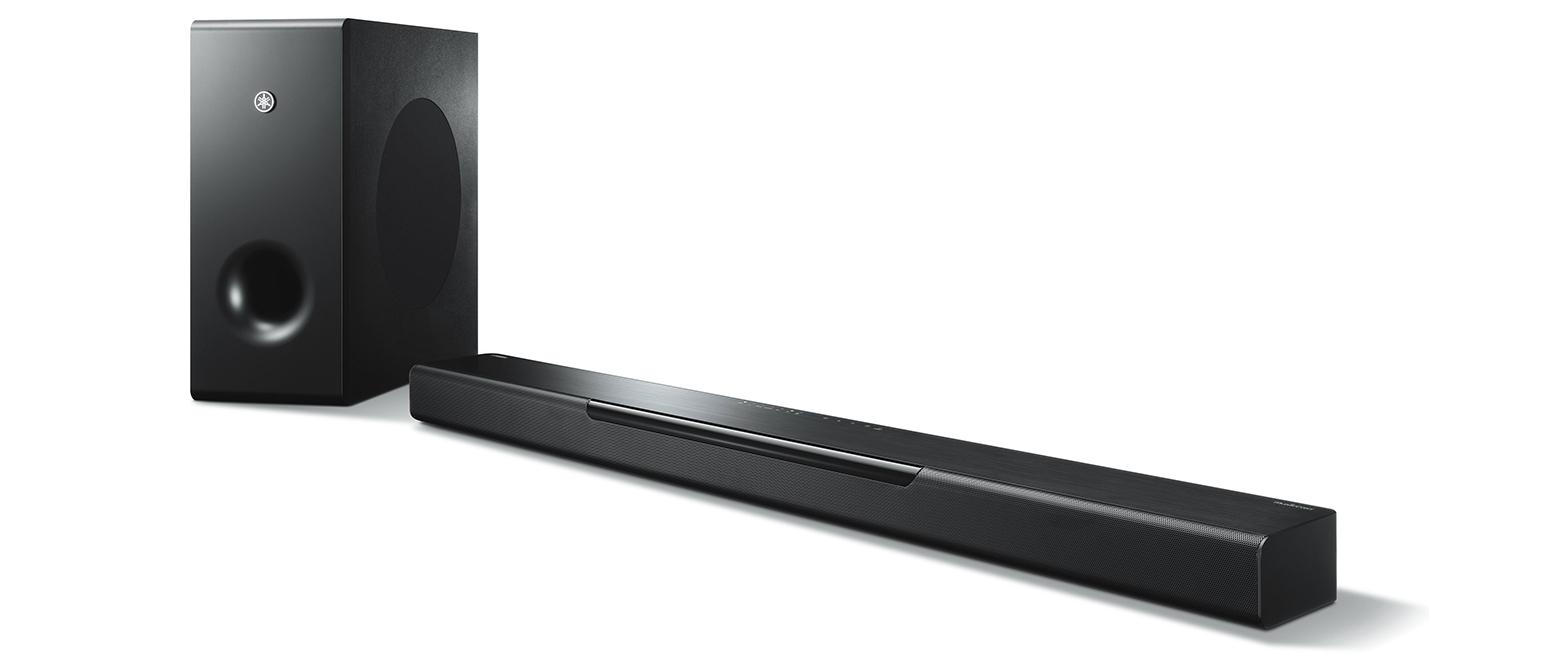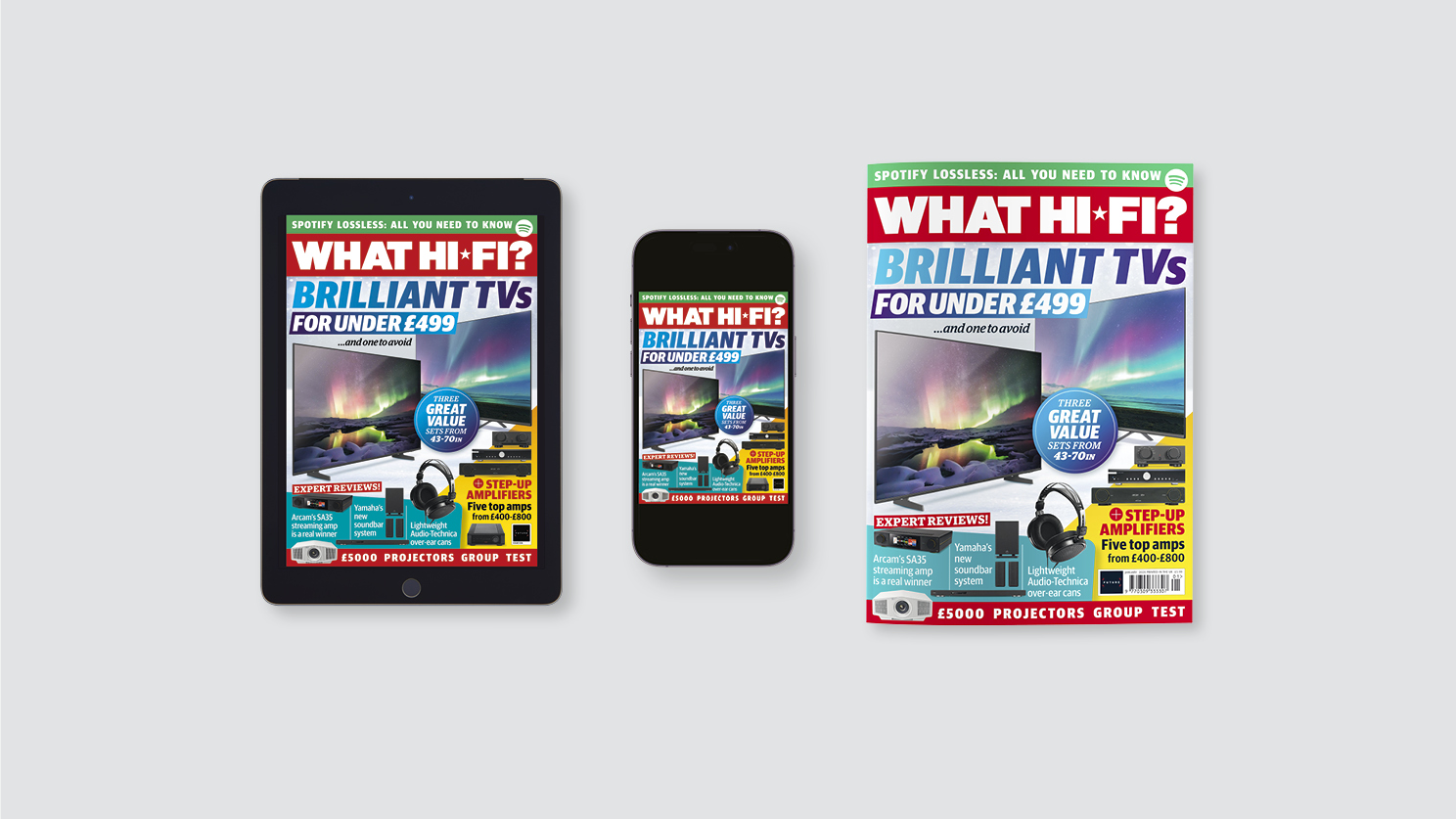What Hi-Fi? Verdict
Sonically, soundbars live on a scale from hopeless to magnificent. Not only does this Yamaha soundbar inhabit the latter echelons, it’s loaded with MusicCast smarts that give it full music streaming and multiroom abilities.
Pros
- +
Good sound for both movies and music
- +
MusicCast streaming and multiroom platform
- +
MusicCast Surround can add real rears
Cons
- -
Subwoofer positioning fairly critical for best integration
Why you can trust What Hi-Fi?
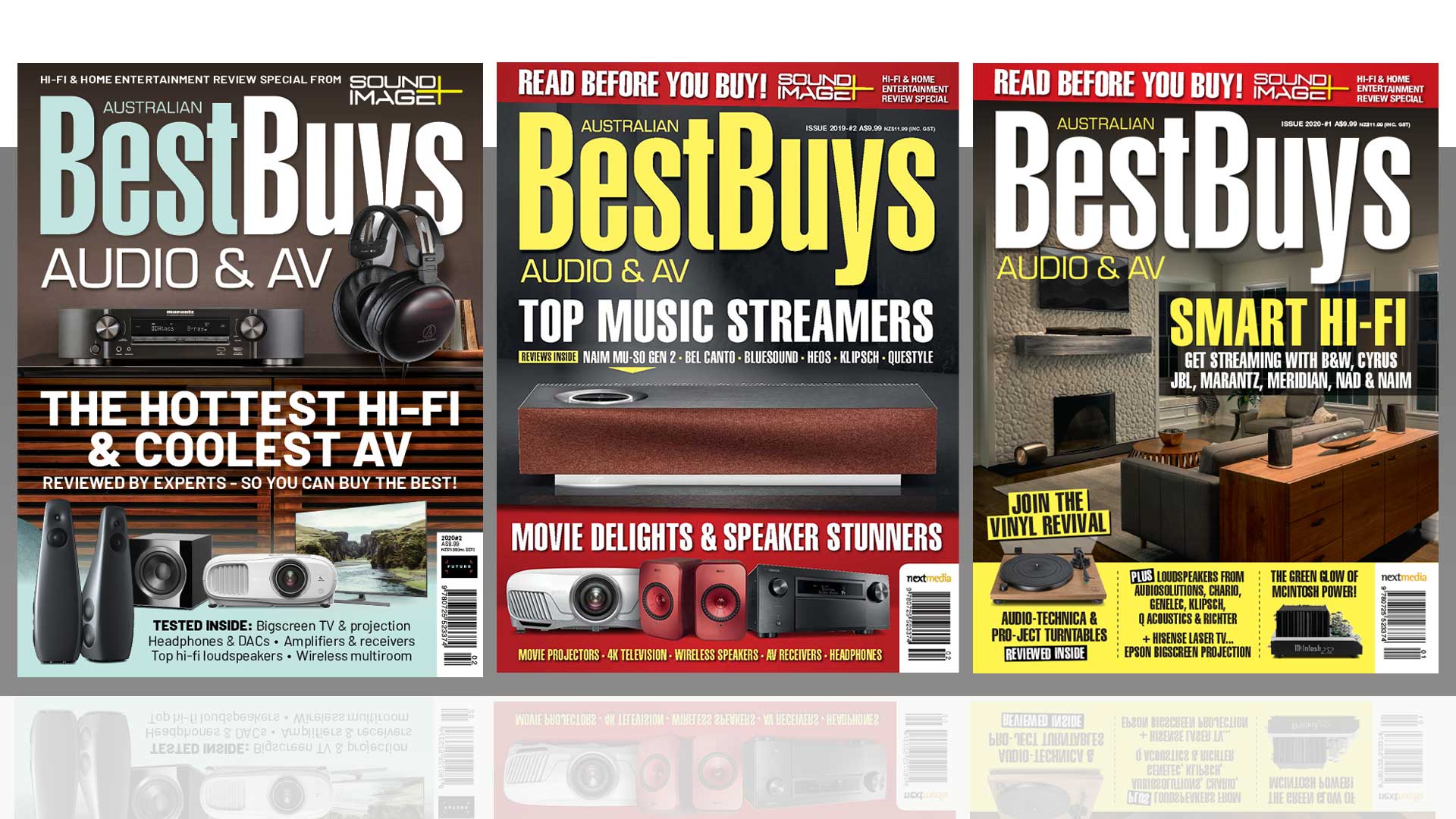
This review and test originally appeared in Best Buys Audio & AV magazine, one of What Hi-Fi?’s sister titles from Down Under. Click here for more information about purchasing Best Buys digitally or in print.
Today’s superslim TVs can look fabulous, but with very few exceptions, they sound awful. They have become so slim that there’s no room for including speakers capable of real movie sound joy.
So an external sound system is an absolutely necessity. And if you don’t have the space to install a relatively hulking Yamaha Aventage 10th anniversary AV receiver along with a room-cramming collection of speakers, then a soundbar can present an attractively discreet sonic solution.
But what about your music? Most soundbars can do a good job with TV and movie sound, but they often fall flat when dealing with the more delicate intricacies of music. Well, the MusicCast Bar 400 is a bar which is built to be music-friendly.
Not only does Yamaha have longer experience than almost anyone else in making soundbars, this particular Yamaha soundbar includes – as its name proclaims – the company’s ‘MusicCast’ wireless multiroom platform, which places it among an extensive range of streaming speakers and hi-fi. As we found during testing, this makes all the difference.
Build
Yamaha’s Bar 400 comprises two parts: the main soundbar to go in front of or below your TV, together with a wireless subwoofer to place wherever is convenient. You can invest further to expand this to true surround (see panel).
The bar is 98cm wide, though the more important dimension may be its height, just 6cm, low enough to avoid covering either the screen or the infrared receiver of many TVs.
If your TV is wall-mounted it could sit on cabinetry below, or it can itself be wall-mounted (“some knowledge of building construction is required for safe installation”, suggests Yamaha, sensibly).
The latest hi-fi, home cinema and tech news, reviews, buying advice and deals, direct to your inbox.
The HDMI connections are reasonably straightforward, as most sound will come to the soundbar from the TV, down the Audio Return Channel of the HDMI cable you use to link the soundbar to your TV. There are also optical and analogue minijack audio inputs as fall-back inputs for TVs without ARC.
You can also plug one HDMI source directly into the bar itself, and you should pick the source from which you’re most interested in getting the best surround effect, perhaps your Blu-ray player or games console.
The Bar 400 on its own is not a true surround device – it delivers 2.1 channels, so stereo plus the subwoofer. It can however decode 5.1-channel audio arriving via its HDMI or optical input, and has DTS Virtual:X on board which promises ‘3D surround’ playback with “sound not only from horizontal directions, but also from varying heights”.

Networked smarts
You’ll also want to network the Bar 400 to activate the abilities of the MusicCast platform, either a wired Ethernet connection to your network, or using the iOS/Android MusicCast apps to connect it with your home Wi-Fi.
Once networked, MusicCast can deliver a wide range of online streaming services such as Tidal, Deezer, Spotify (including free Spotify accounts these days), and internet radio.
MusicCast can also play from music shares on your home network via DLNA, while AirPlay 2 integrates it nicely into Apple-based homes. Finally there’s Bluetooth for direct streaming from any device, though the MusicCast app can also play tunes from your device over Wi-Fi, which may give better quality.
As a final trick, MusicCast can also send sound out via Bluetooth, so you could extend the audio to perhaps a small speaker in an open-plan kitchen to better hear things as you prepare food, or use wireless headphones to enjoy movies and music late at night without disturbing the rest of the home.
Setup
The subwoofer is slim but tall, or could be lain down; it’s a bass reflex cabinet ported to the front with its driver on the right side, so if standing it will be best positioned to the right of a TV where the driver can fire into space.
The bar proved low enough not to cover the bottom of our low-slung TV, though its reflective top was slightly distracting. The connections are in two bays at the back, so cables pass easily under a TV leaving things nice and neat at the front.
We plugged in Ethernet to give the MusicCast platform its easiest connection, a 4K Blu-ray player to its HDMI input, and an HDMI cable through to the TV. Power cables plugged in, we hit the power button on the squat little remote control, and on came the bar and subwoofer in unison.
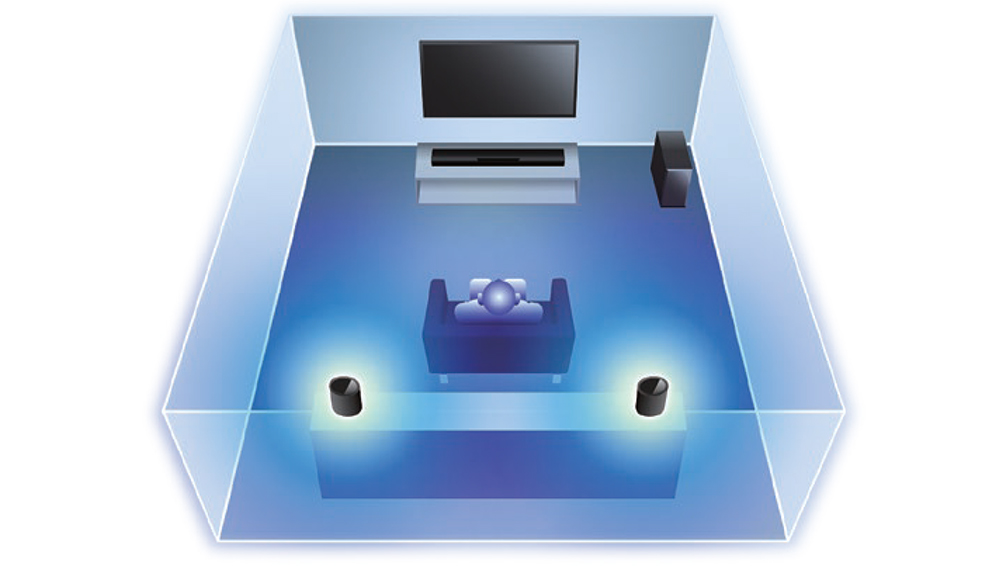
Sound
The remote has an interesting design – volume buttons prioritised and large on the right, subwoofer volume on the left. That’s an implication that you might want to mess with the bass regularly, rather than set and forget, and we found this to be the case.
A daytime National Press Club address on ABC HD gave us a good variety of speech to hear, and the subwoofer added a separated bass mumble under many of the deeper male voices, distracting enough that we preferred the bar alone in this circumstance. But as soon as we switched to more action-based content, with soundtrack music behind it, we raised the sub back up, keeping it around halfway or less.
The Hank Williams biopic I Saw The Light was delivered to the bar in stereo down the HDMI’s ARC – many TVs will always send only stereo down HDMI ARC, others will allow compressed 5.1 such as Dolby Digital, but not the likes of Atmos and DTS:X.
If your TV can oblige, the Yamaha can decode Dolby Digital 5.1 and DTS Digital Surround. If your TV can’t, plug your main movie source – Blu-ray or AppleTV etc. – into the Yamaha’s own HDMI input, and enjoy it that way. Or try connecting from your TV optically (if you can’t hear any sound at first, you may need to switch the audio output format within your TV menus).
Even if you are working with stereo, the Yamaha offers three audio modes: Stereo, Surround, and 3D Surround. The Stereo setting yields the cleanest sound, perhaps the best balance for speech-heavy material, yet it’s a strong sound, so good for music too, not particularly box-bound or reduced, as are many ‘stereo’ options on soundbars where higher driver counts are cut down for stereo – this is a stereo soundbar anyway.
But the first ‘Surround’ option doesn’t much mess with the central channel either. Speech retained its clarity with this setting, while music and effects were spread wider; it’s a good balance between size of sound and clarity of sound. The fine ‘big band’ sound in the movie Whiplash sounded tightest and cleanest in Stereo or the similar Music mode; the Surround mode expanded the sound at the sole expanse of a slight bloom in the bass.
Move up the ‘3D Surround’ option and there’s an enormous tonal effect on the whole sound, hollowing out the centre, shifting and thinning speech, in Whiplash sometimes overemphasising elements such as chirping crickets and later the rain during a porch scene. ‘3D Surround’ lifted these ambient elements from the background into unnecessarily prominence, while the big band now sounded phasey, with cymbals muffled. Our preference was for the two simpler modes, but it’s easy to experiment using those big buttons on the remote. Find your own preference.

The lower two remote buttons need a little more attention – ‘Clear Voice’ and ‘Bass Extension’ can be toggled on and off, and since the indicator lights on the bar aren’t visible from a seated position, you might leave them engaged when you don’t need them. It’s clearer in the app – and indeed the MusicCast app adds still more EQ options: Movie, Music, Sports and Games, along with easy toggle control of the others. Oddly the ‘surround’ option isn’t listed in the app, but pressing it on the remote switched the app to ‘movie’ mode, so we guess they’re the same.
MusicCast devices can also be controlled by either Google Assistant or Alexa – you’re prompted to set this up when connecting to MusicCast. It worked, but it was usually easier to use the remote control.
Or use the MusicCast app. We’re MusicCast regulars from many past reviews, and we find it clear to use and easy to access our music, including high-res files up to 24-bit/192kHz over the network, and online music too. It’s also easy to get multiroom sound happening by joining multiple MusicCast ‘rooms’ together.
The more music we played, the better we were impressed. We also re-situated the subwoofer, better able to judge its positioning with music; its performance was tightened and integrated significantly by bringing it as central as possible, the wide side with the active driver facing forward and the port firing to the side. We’d pick a good box-speaker solution for musical accuracy, but we played many days of enjoyable Spotify through the Bar 400 without our ears objecting at all, something we can rarely say of soundbars.
MusicCast Surround
Under the main app settings you can set up MusicCast Surround, which allows you to use wireless MusicCast speakers either temporarily or permanently as wireless rears, thereby delivering true surround without those ugly wires. You’ll need to plug each unit into the mains, of course, but the Bar 400 will then send their sonic signals wirelessly, as it does to the subwoofer. The result will be 4.1-channel surround, given the Bar 400’s 2.1 status.
Currently you can use either two of the small MusicCast 20 speakers, or one of the larger (and stereo) MusicCast 50 speaker, which would be positioned directly behind the listener, firing to left and right.
One MusicCast 50 speaker (£349, US$499.95, AU$699) worked well behind a single listener, its speakers firing to either side, but the more social spread comes from using two of the little wireless MusicCast 20 speakers (£199.95, US$229.95, AU$349 each).
We installed these at equal distances beyond either end of our comfy sofa, and while we had to run mains power to each one, there were at least none of those long snaking cables that used to be required before the joys of wireless signal transmission (for which we gather Yamaha uses its own connection, not your home Wi-Fi).
From there on we enjoyed a great deal of movie fare, especially from Blu-ray where we could enjoy the proper 5.1-channel surround. One thing was quickly clear – real surround makes a huge difference to the immersion of a good movie soundtrack.
This might be expected with the blockbuster action movies, as when we blasted out the No Man’s Land sequence of Wonder Woman, shells flying and bullets careening off her bangles, but the rear information also filled out the cityscapes of Blade Runner 2049, the winds of Balmoral and the palace acoustics of Victoria & Abdul.
MusicCast Surround has perhaps its best advantage as a temporary set-up for big movie nights, because then you can use those rear speakers as standalone wireless multiroom speakers in other rooms for most of the time. It’s simplicity itself (a matter of seconds) to reassign them, so you get double functionality – real surround when you want it, wireless multiroom the rest of the time.
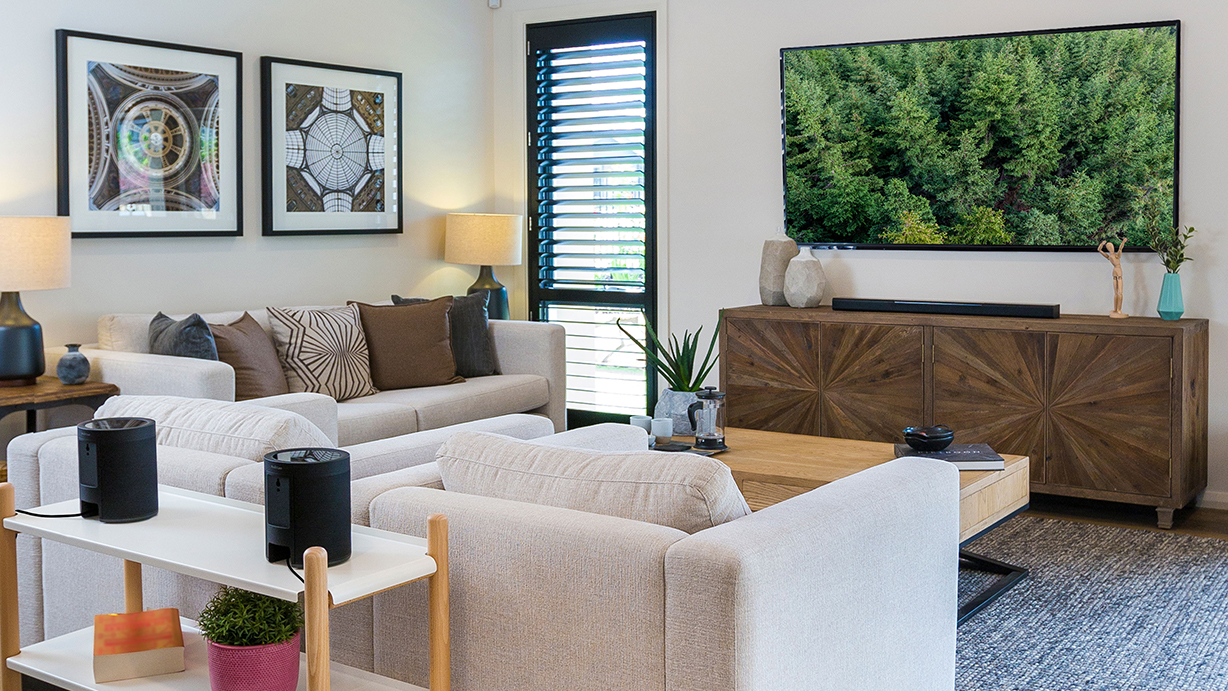
Final verdict
Highly versatile, loaded with MusicCast, unusually musical, expandable for surround – the MusicCast Bar 400 proved an exceptional performer for its price.
